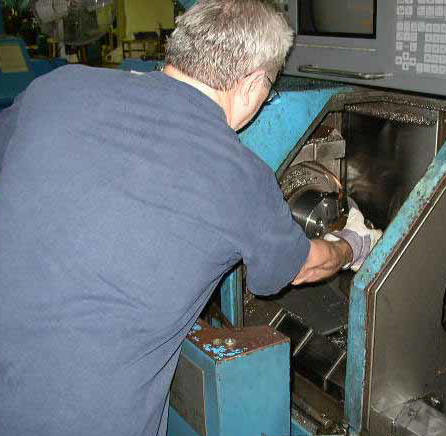 |
 |
| Reaching to load — sometimes with a heavy part | |
Background
The primary issue is the reach to the point of operation, often with a heavy load. Unfortunately, the reach is frequently related to the design of the machine and difficult to retrofit. Moreover, the reach is sometimes caused by the inherent function of the machine and difficult to design out.
The issue affects especially large machines, such as machine tools, presses, and packaging machines. Bench-top machines can be affected as well, but these are typically easier to remedy.
Objectives
Reduce the reach distance if possible. Support the load if possible.
Ideas and Options
Indexers
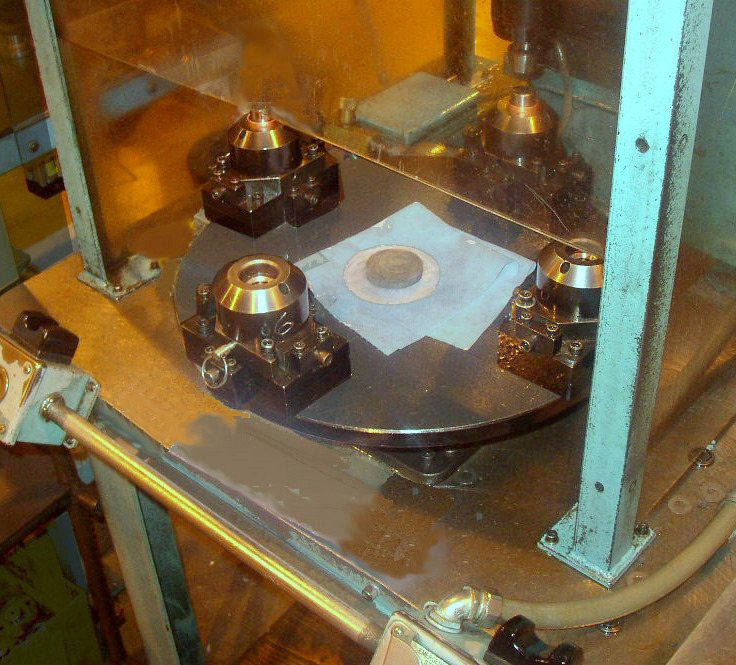 |
 |
| Rotating indexers | |
One of the best ways to load machines is with an indexer. Indexers are often used to increase machine efficiency, but they also put the loading position much closer to the operator and thus reduce reaches and minimize motions.
Loading assists
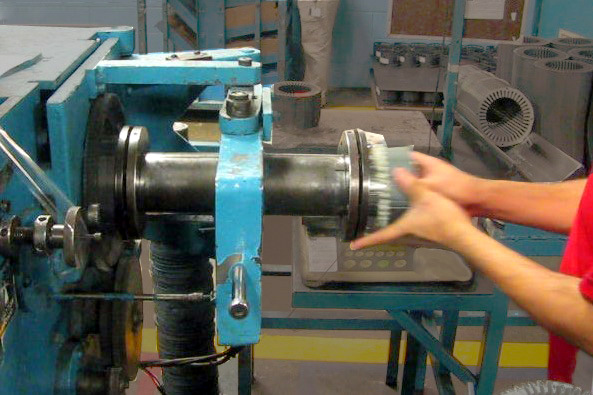 |
| Loading assist (See video clip) |
Loading assists can sometimes be added to the machine. The example above is unique and very fast. It must be seen on the video clip to be appreciated. The operator loads one end of the assist while the machine is cycling, very similar to the concept of using an indexer. The assist is ingeniously designed with a cam action that reverses the loading arm almost instantaneously.
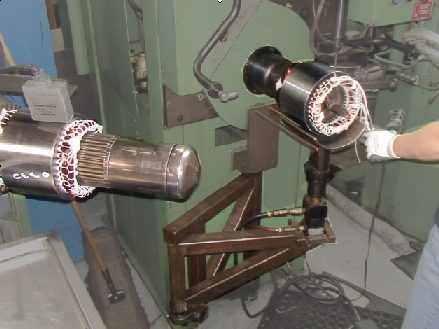 |
| Articulated arm and cradle (see video clip) |
This example shows an articulated arm and cradle used to load two machines in sequence. To load the arm, the operator simply rolls the cylindrical part from a conveyor onto the cradle. Then the arm is shifted first to one machine, then to the other. The arm is height adjustable, controlled by a foot pedal.
Comments:
- This particular arm has several points of articulation, which requires control to position correctly, which amounts to overkill in most situations. Usually, it would be better to design a simpler and less expensive arm that positions the load precisely without needing to aim.
- Arms like this have wide potential for use in a variety of other material handling situations, not just for loading machines.
Carts and lifter-transporters
 |
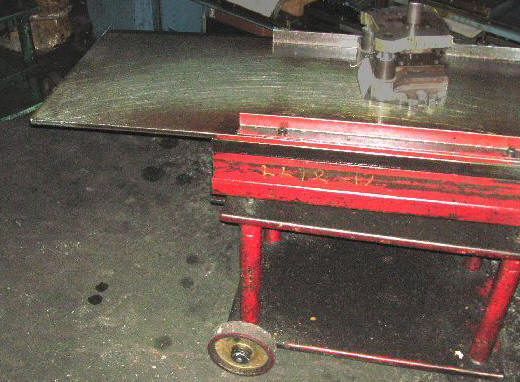 |
| Counterbalanced lifter-transporter (www.vestilmfg.com) | Cart with extended shelf |
Carts, such as the classical die cart, have been traditionally used to change tooling. In the right situations, carts can also be used for loading parts. Usually the limiting factor is the horizontal distance and clearance needed to bring the cart close enough to use. A cart with an extended shelf can sometimes be used, if sufficiently counterbalanced.
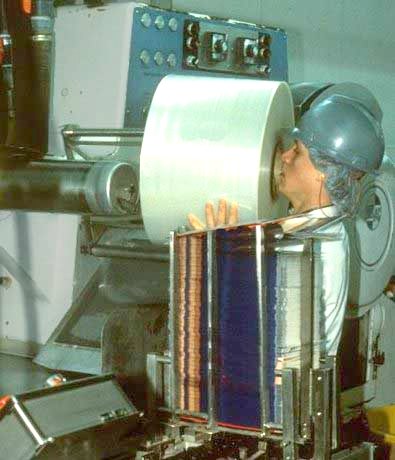 |
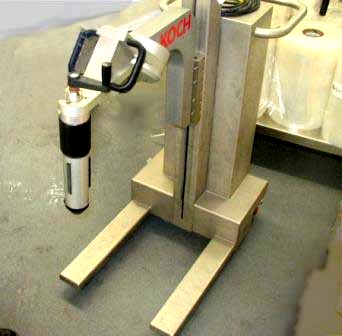 |
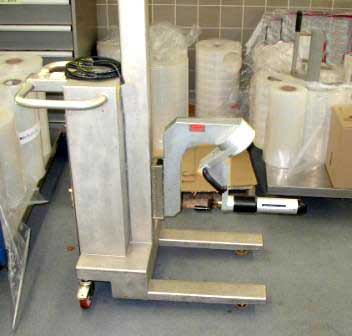 |
| Before: manual loading | Lifter-transporter, vertical for lifting from pallets | Lifter-transporter, horizontal for loading |
Carts and lifter-transporters are commonly used for loading heavy rolls of wire, plastic, and similar consumables. The example above shows a lifter-transporter for loading heavy rolls of plastic wrap onto a packaging machine (this model is stainless steel for use in the food industry). Note that the end-effector here can be manipulated to a vertical orientation for picking up the rolls from pallets, then changed to horizontal for loading.
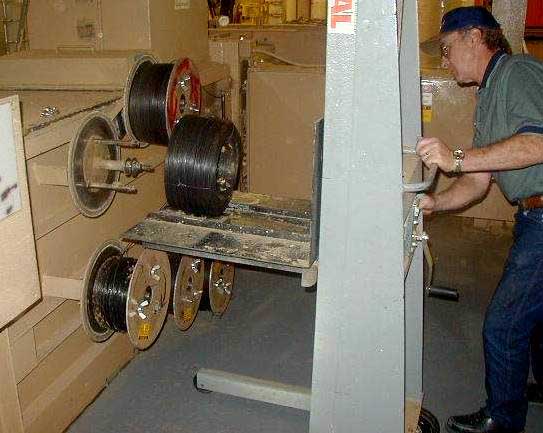
Lifter-transporter for loading wire reels
Another example, for loading heavy wire reels. As with most lifter-transporters, pushing the unit across the floor is manual, but height adjustment is powered.
Hoists
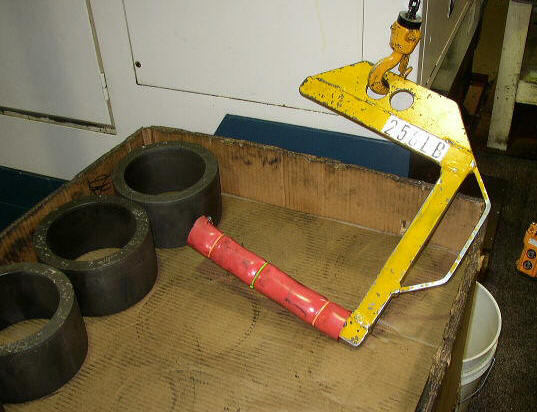 |
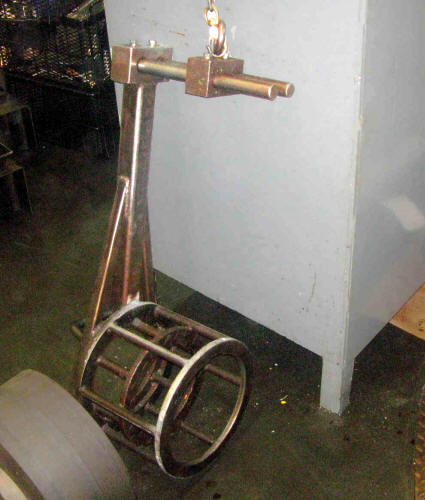 |
| Hoist hook/end effector | |
Hoists are frequently used to load large parts into machines. Typically, the hoists themselves are standard, but hook design can be innovative for the parts being handled.
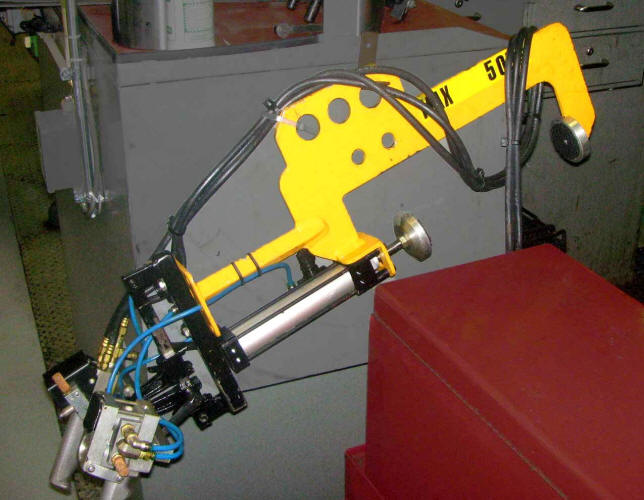 |
 |
| Powered assist, suspended from hoist | In position in centerless grinder |
The example above shows a powered assist suspended from an overhead hoist for loading parts into a centerless grinder.
Hoists have been effective in low volume production with parts that are too heavy to lift by hand. However, they are less effective in higher volume operations with parts that can physically lifted by at least some operators. In these situations, there is a strong temptation to lift the parts by hand rather than use the hoists, because the hoists are usually slower.
Manipulators
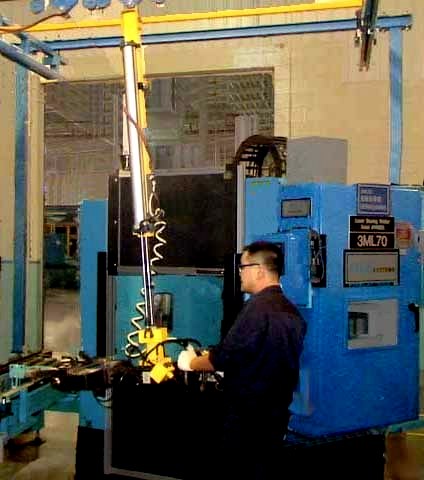
Manipulator on overhead gantry tracks
Manipulators are less common, but a good alternative where feasible.
Robots
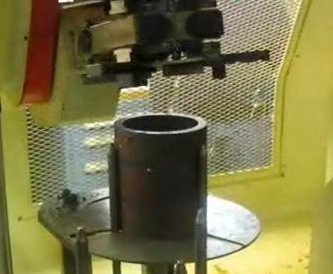 |
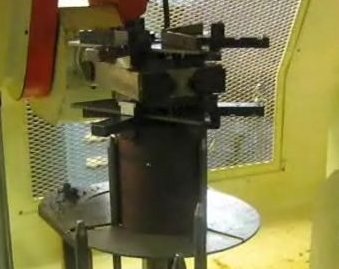 |
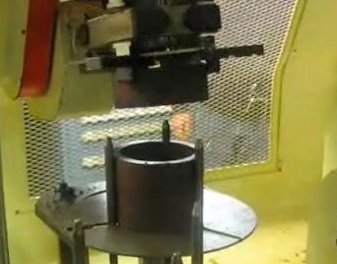 |
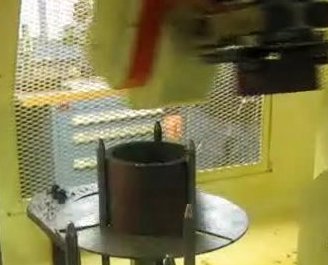 |
| Pick and place robot built into machine tool | |||
Robots are increasingly common for loading machines, including machine tools. (Technically, robots are not a part of ergonomics, since they eliminate the interface between humans and machines, rather than improve it.)
Automatic loaders
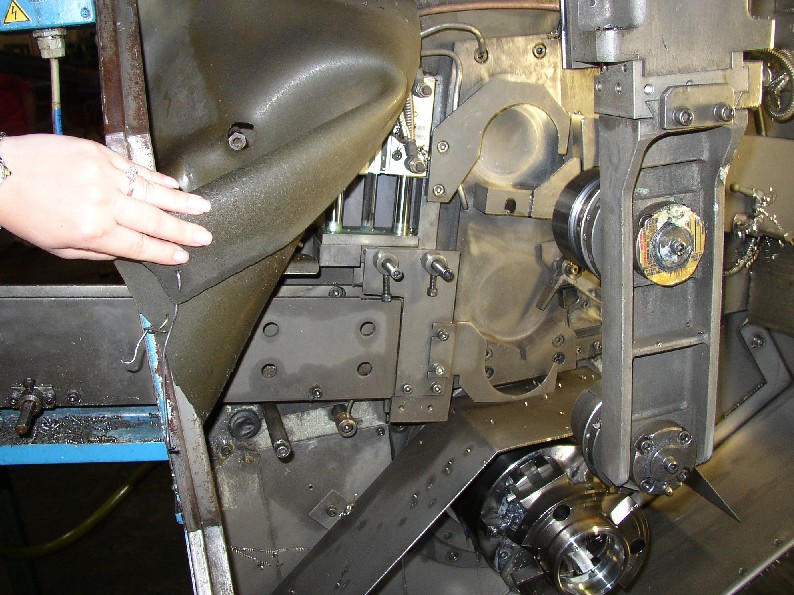 |
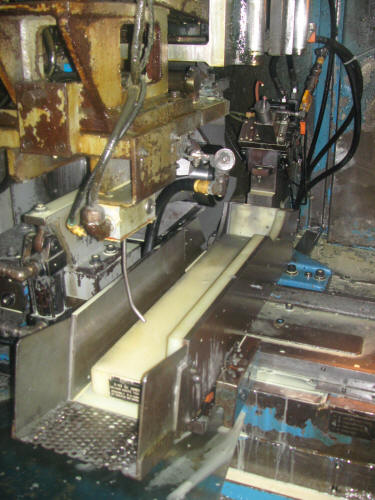 |
| Loader | Unloader |
Automation provides an option for high volume production. Additionally, the mechanisms provide guidance for integrating slides into machines to assist manual loading. Technically, automation is not part of ergonomics, since it eliminates the human interface with machines rather than improving it. However, the point here is that automation provides insights for improving manual work. SeeBorrowing from Automation.
Programming to reduce reaching
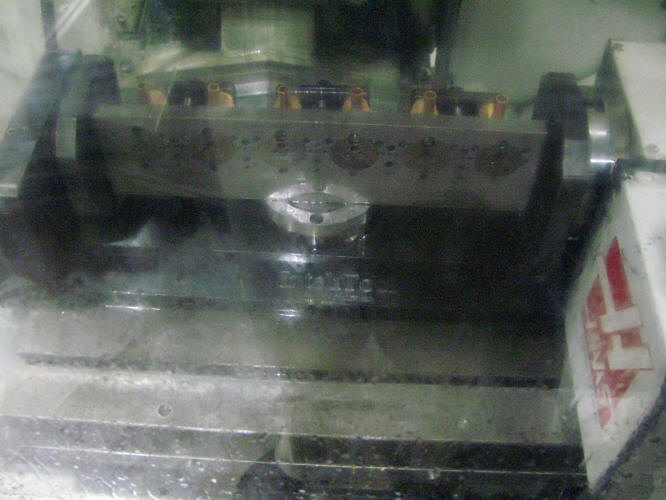 |
 |
| Programmable flat bed (through window in splash guard) | Loader on tool turret |
An easy improvement that is sometimes overlooked is to program the internal mechanisms of machines so that the fixtures are as accessible as possible for loading and unloading. Also, the moving mechanisms provide opportunities for creative solutions, such as the example above right where a loader was added to the tool turrert.
Slides
In many industrial operations slides provide an effective, low-cost technique to eliminate the need to lift. However, for machine loading, the application has been underutilized. The following examples show a few types of slides that hopefully will stimulate brainstorming and new applications of the concept of sliding.
 |
 |
| Before: Low rack for bar stock | After: High rack allows bars to be rolled into place |
An example of successful use of the sliding concept is shown above for loading long bar stock into a screw machine. By raising the staging rack, the bars can be simply rolled into place.
 |
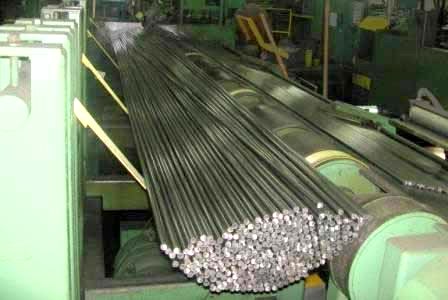 |
| Powered strap: Low position | Raised position |
Usually anything that raises parts up and close to the point of use is helpful. This powered strap shows another method for raising bar stock to the point where it can be slid into place.
 |
 |
| Projectile loader — Down position for sliding and loading | Up position, out of the way |
Naval guns have traditionally used slides on hinges to load heavy projectiles. The illustration above left shows the projectile being pushed with slide (or “spanning tray”) in the down position leading to the chamber. The illustration at right shows the slide in the up position.
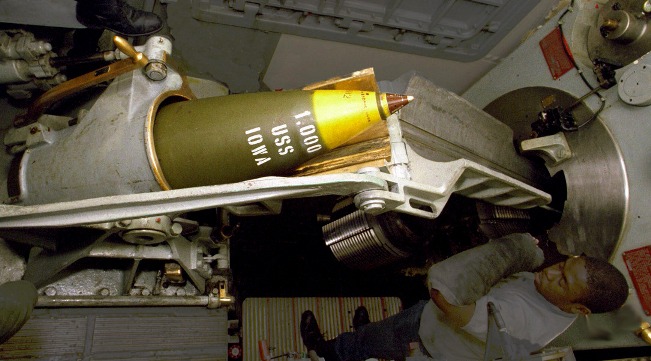 |
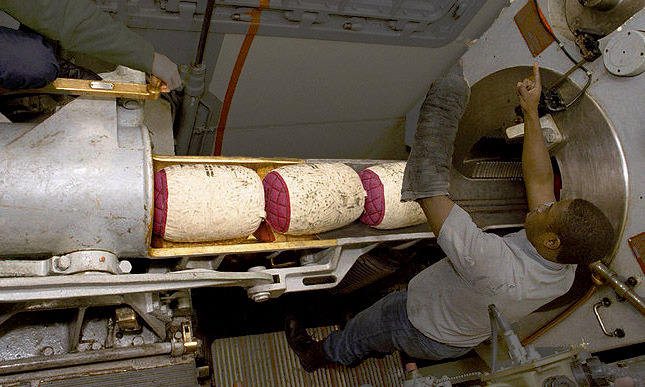 |
| Spanning tray half-way down | Down position (showing powder bags) |
The photos above show a spanning tray from the USS Iowa. The projectiles are too heavy to lift and hoists would be too cumbersome and slow. The slide mechanism is fast and effective. Equivalent devices could be developed for loading machine tools. (Photos: US Dept. of Defense)
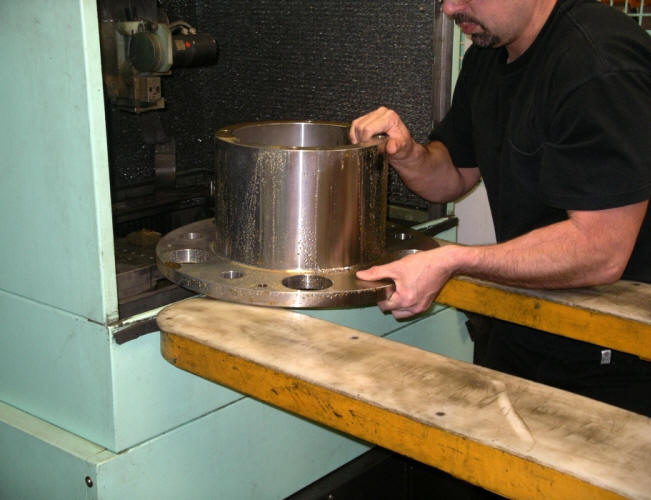 |
| Slide on plastic-covered fork lifts |
The example above shows the forks on a walkie lift truck used to slide a very heavy part into a machine. There are multiple points to be made with this example:
- It is feasible to slide a heavy part. Typically a hoist would be used in this situation, but was not possible here because of the room configuration.
- There were lips and height differences within the machine that made sliding difficult. A team evaluation showed that these obstructions could be eliminated to facilitate sliding.
- There were problems with the original method, primarily the safety hazard created because some parts could fall in between the forks. As part of a kaizen event, a team evaluated using a sheet of slippery plastic on the forks, rather than merely covering the surface of the forks themselves.
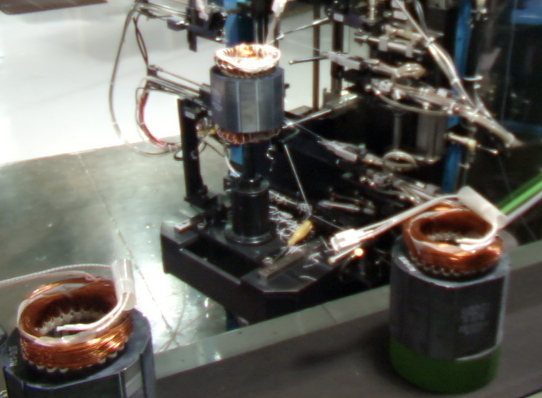 |
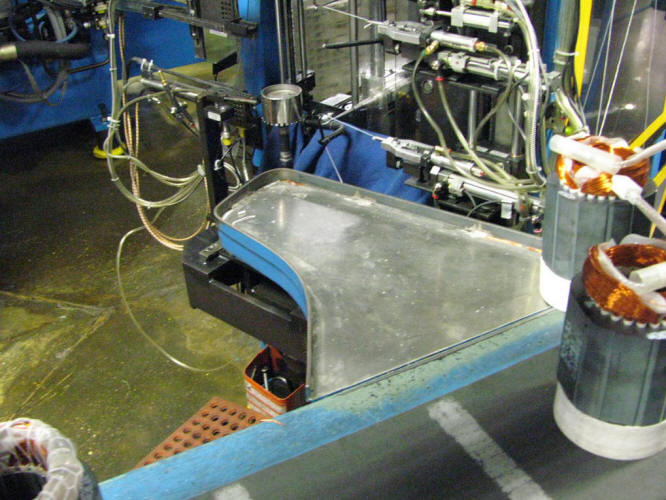 |
| Before | After |
This example shows how a slide was added to help load heavy motors into a lacing machine. A lift is still needed to load, but the carrying distance has been reduced.
This is an easier fix than is possible for machine tools and other large machines, but nonetheless it provides insights into how slides can be incorporated elsewhere.
Locators, guides, lips, and cradles
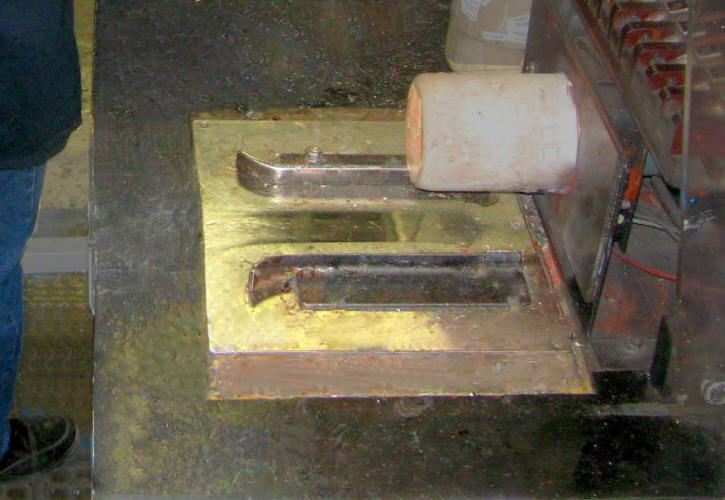 |
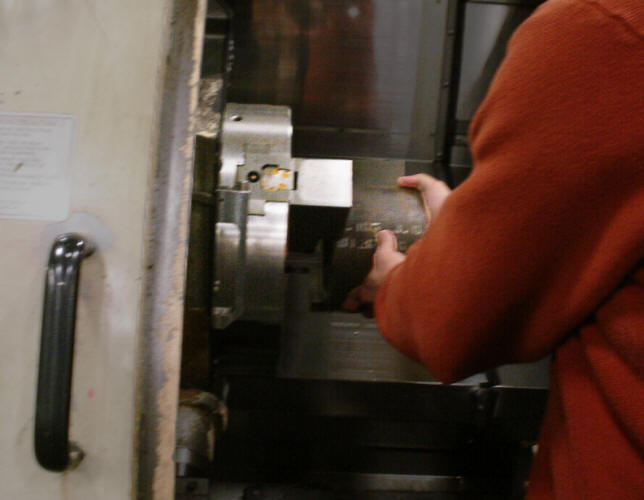 |
| Locator on bench-top machine | Possible lip or guide for support in extended position |
Locators and guides provide a simple, low-cost technique to improve loading. Combining with a slide (as in the example above left) is optimal, but even a small lip would help to support the weight when holding the part at arms length.
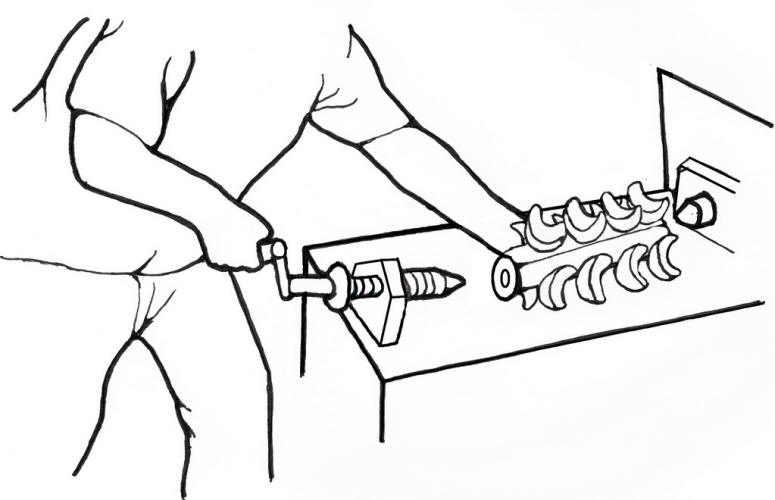 |
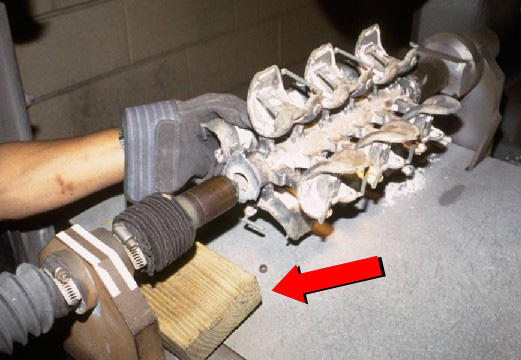 |
| Before: Illustration of loading position | After: Cradle, using wood block |
Cradles provide a similar approach that can also be low cost. The example shows a wood block that worked well to hold a casting in place while the tailstock holder was cranked into position. Tightening the crank lifted the casting just enough to move the wood block. See Maintenance: Cradles.
Bench-top machines
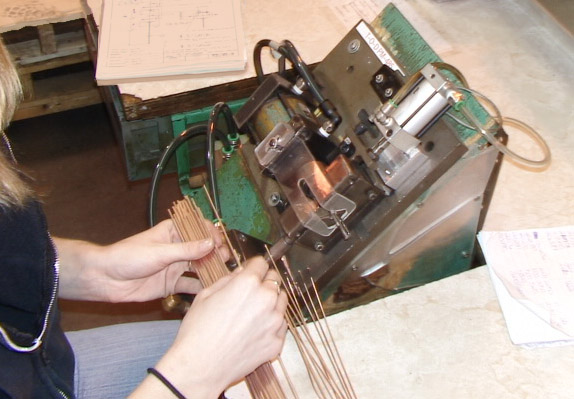 |
| Multiple good features |
Conceptually, loading issues are the same for small machines, but they are much easier to remedy. These techniques can provide insights into possible improvements for larger machines.
The photo above shows a number of good features:
- The machine is recessed into the workbench so that the stock can be easily placed into the point of operation (if not actually slid into place).
- The machine is slanted to provide good visual access to the point of operation.
- Good height, minimal reaching.
See also Workstations: Parts handling.
Other types of loading
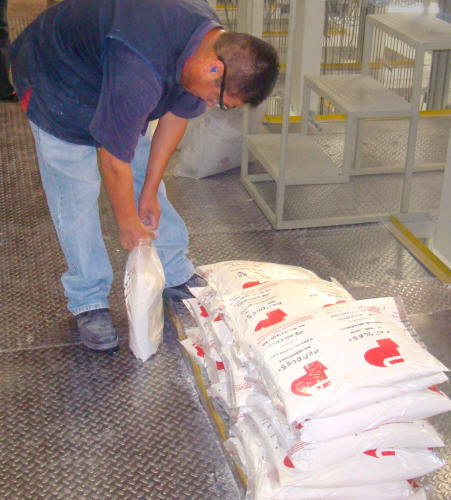 |
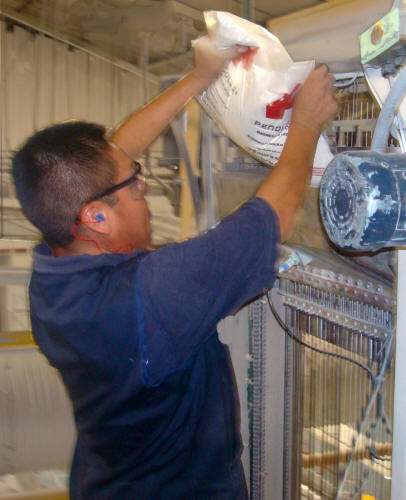 |
| Dumping powder into machine | |
Depending upon the machine and type of operation, there may be a huge variety of items that are loaded. See all of Material Handling for ideas and options for improvement.
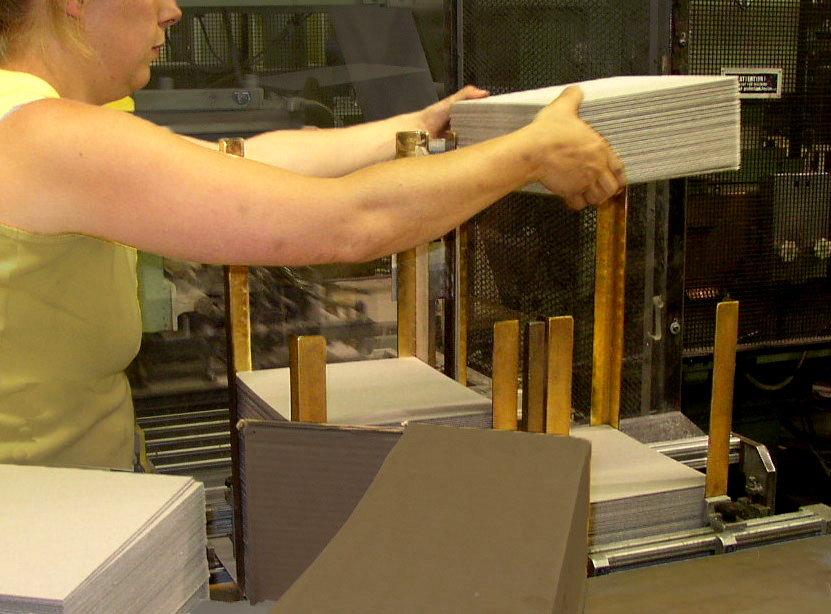 |
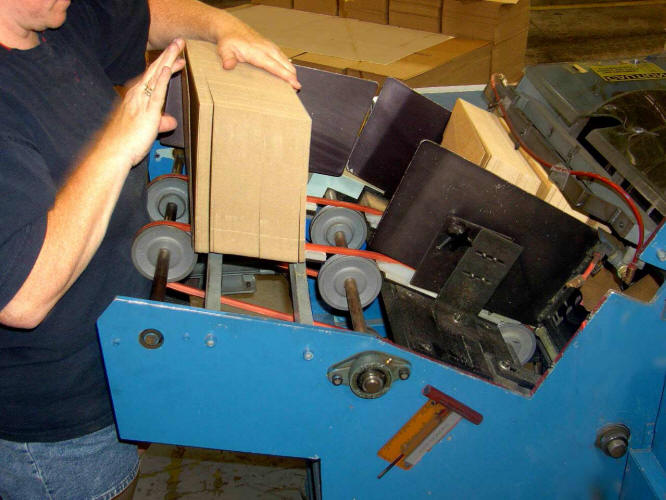 |
| Awkward design | Better design |
Printing machine, loading cardboard flats. The left-hand photo shows a design that requires a high, outstretched reach. Furthermore, the vertical guides are as much a barrier as an aid.
The design of the loading system in the right-hand photo is much better. There is no reach and the guides make it faster to load.
The design in the left photo takes two to three times longer to load, plus the strain on the shoulder is over three times that of the right hand photo (assuming the same weight for the stacks of cardboard. Taking into account both duration and reach, the shoulder strain for the awkward design is about seven times that of the better design.
